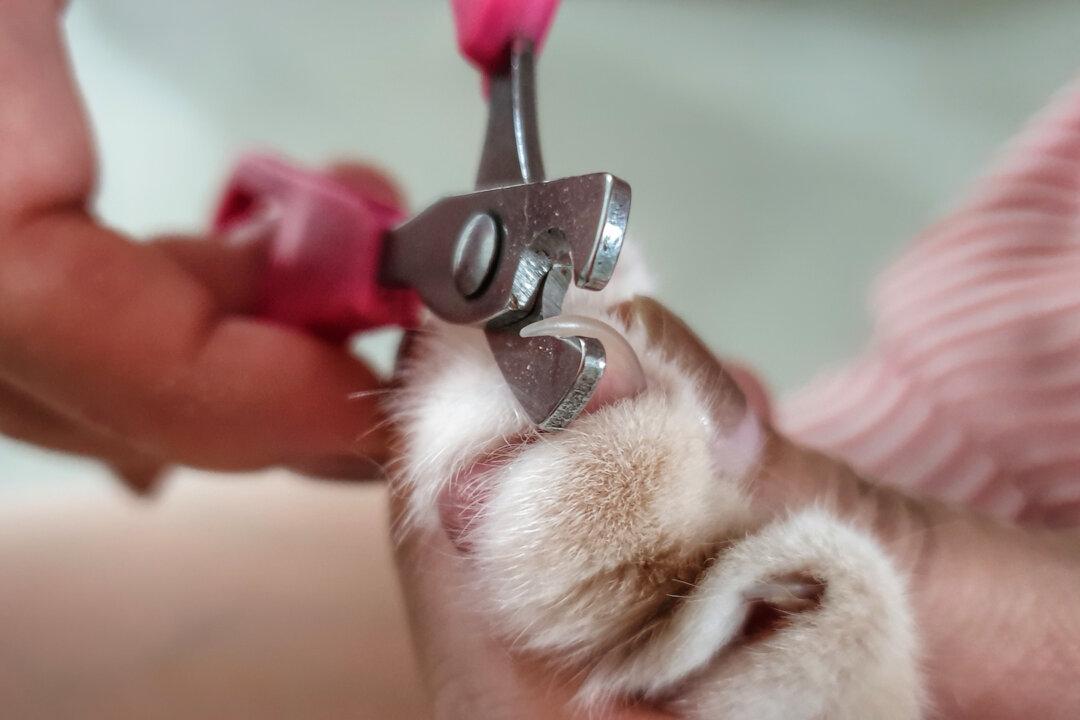Q: We’re pretty sure our dog, Holly, ate a remote control with its batteries, because we can’t find it anywhere. She seems normal. What should we do?
A: Take Holly to her veterinarian immediately for a physical exam and radiographs, often called X-rays.
If Holly did eat the remote, or even just a battery, she could develop severe medical problems. Treatment is most successful if begun early.
Once swallowed, a nonfood item becomes what veterinarians call a gastrointestinal foreign body. The stomach can’t digest it, and if it’s relatively large, it can block the gastrointestinal, or GI, tract.
Battery ingestion is especially harmful, regardless of whether it’s an alkaline or a lithium battery. Alkaline batteries are the more common household batteries, available in AAA, AA, and other sizes. Lithium batteries are usually small, round discs.
If you see black powdery material in Holly’s mouth, it’s likely she punctured an alkaline battery. These batteries contain potassium hydroxide or sodium hydroxide, caustic chemicals that burn the tissues of the GI tract and cause deep ulcers.
Lithium batteries are much riskier, even if they aren’t punctured, because they emit electricity. The risk is highest if the battery becomes lodged in the folds of the esophagus, where the electrical current rapidly damages the tissues, causing perforation or a stricture.
Some batteries also contain heavy metals, which are toxic.
Don’t induce vomiting unless your veterinarian instructs you to do so. A damaged alkaline battery can cause corrosive injury to the esophagus and throat on its way up, and a lithium battery may get stuck in the esophageal folds and cause electrical injury.
Tell Holly that the next time she wants to get charged up, she should grab her leash and take you for a walk.
Q: My partner’s physical abuse of me is getting worse, and I want to leave him. I have to take my cat with me, because I know he will kick her out or abuse or kill her if I don’t.
I have no family or close friends in the area—I realize now that my partner has been isolating me from them—and it’s hard to find apartments that accept cats. I need my pet’s love and comfort now more than ever, so I won’t relinquish her to the animal shelter. What can I do?
A: You are wise to be concerned about your cat, because abusers often hurt or kill their victims’ pets. Too many abused women remain with their abusers because they know of no other way to protect their beloved companion animals.
I suggest you contact your local women’s shelter and the National Domestic Violence Hotline for free, confidential support at 800-799-SAFE (7233) or TheHotline.org. If you suspect your partner monitors your internet history, use a public computer or a friend’s device.
To find a safe place for your cat to stay temporarily, visit SafeHavensForPets.org, the Animal Welfare Institute’s Safe Havens Mapping Project. About 10 percent of the safe havens offer cohousing, where you and your cat can live together.
However, most safe havens use foster homes, animal shelter housing, or kennel space donated by veterinarians. Your cat will be cared for in a safe, confidential location while you stay at the women’s shelter. Once you’re settled in your new home, the two of you will be reunited there.
For information on including your cat in your temporary restraining order, visit AWIonline.org/safe-pets. Other readers can consult this link to learn how to establish safe havens for the companion animals in their communities.
Lee Pickett, VMD, practices companion animal medicine in North Carolina. Contact her at AskTheVet.pet. Copyright 2020 Lee Pickett, VMD. Distributed by Creators.com





